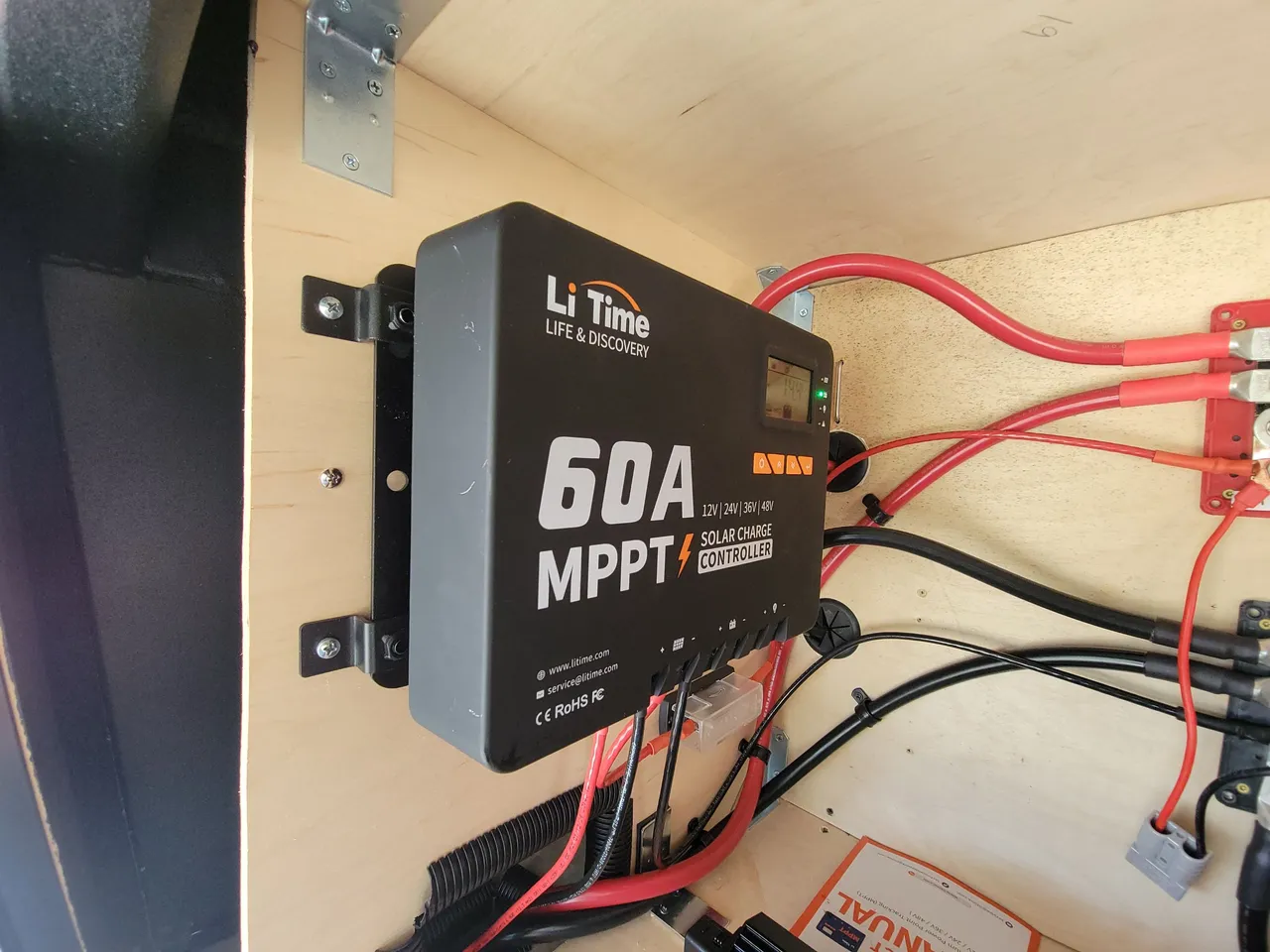Solar Charge Controller

For my system, I also installed a 60 Amp MPPT (Maximum Power Point Tracking) solar charge controller to replace the old PWM (Pulse Width Modulation) controller provided by the factory. The old PWM controller was not compatible with lithium batteries, which necessitated the upgrade.
MPPT Solar Charge Controller
Why MPPT?:
Efficiency: MPPT controllers are significantly more efficient than PWM controllers. They can convert excess voltage into additional current, maximizing the power harvested from the solar panels. This efficiency is particularly important when using higher voltage solar arrays.
Compatibility with Lithium Batteries: Unlike the old PWM controller, the MPPT controller supports lithium batteries. It has specific charging profiles that match the charging requirements of LiFePO4 batteries, ensuring safe and efficient charging.
Key Features:
Real-time Tracking: MPPT controllers constantly track the maximum power point of the solar panels, adjusting the input to extract the maximum possible power.
Higher Output: With the ability to handle up to 60 amps, the MPPT controller ensures that the batteries receive the optimal amount of current, even under varying solar conditions.
Programmable Settings: Many MPPT controllers offer programmable settings, allowing customization of charging parameters to suit specific battery types and configurations.
Solar Panel Installation
Additional Solar Panel:
Increased Capacity: I installed another solar panel, bringing the total capacity to 400 watts. This additional panel helps to generate more power, especially during peak sunlight hours, enhancing the overall energy production.
Future Expansion: My goal is to eventually have 1200 watts of solar panels on the roof. Increasing the solar capacity to 1200 watts will provide ample power to keep the battery bank charged, even on cloudy days or when energy consumption is high.
Benefits of the Upgrade:
Enhanced Charging Efficiency: The MPPT controller maximizes the energy harvested from the solar panels, ensuring that the batteries are charged as efficiently as possible. This is particularly beneficial for lithium batteries, which require precise charging to maintain their longevity and performance.
Increased Solar Power: Adding another solar panel boosts the total wattage, allowing for more energy generation. This helps to keep the batteries charged and reduces reliance on external power sources.
Optimized for Lithium Batteries: The MPPT controller's compatibility with lithium batteries ensures that the charging process is safe and efficient, preventing potential issues related to overcharging or incorrect charging profiles.
Scalability: The system is designed to be scalable, with plans to expand to 1200 watts of solar panels. This future-proofing ensures that the power system can meet increasing energy demands without significant overhauls.
Reliability: By using high-quality components like the MPPT controller and additional solar panels, the system becomes more reliable, providing a consistent and stable power supply for the trailer.
Installation Considerations
Mounting and Wiring:
Roof Space: Careful planning is required to utilize the roof space efficiently, ensuring that there is enough room for the planned 1200 watts of solar panels.
Wiring: Proper wiring is essential to handle the increased current from additional panels and to ensure safety and efficiency. Using high-quality, weather-resistant cables and connectors is crucial for long-term reliability.
System Monitoring:
Integration with Battery Monitor: The solar charge controller can be integrated with the battery monitoring system to provide real-time data on solar input, battery state of charge, and energy consumption.
Remote Monitoring: Some MPPT controllers offer remote monitoring capabilities, allowing me to track the system’s performance and make adjustments as needed, even when I’m away from the trailer.
In summary, the installation of a 60 Amp MPPT solar charge controller and the addition of another solar panel have significantly improved the efficiency and capability of my power system. The upgrades ensure that my lithium batteries are charged properly and that I have sufficient solar power to meet my energy needs. As I work towards expanding the system to 1200 watts, these enhancements will provide a robust foundation for reliable and sustainable off-grid power.
Note: I wrote the initial paragraphs and then enhanced them with the help of ChatGPT.